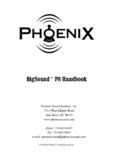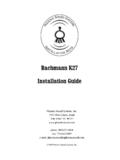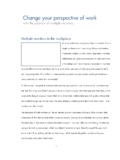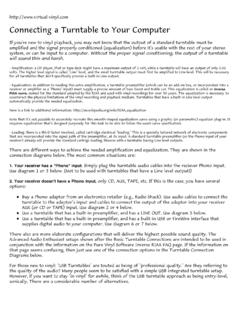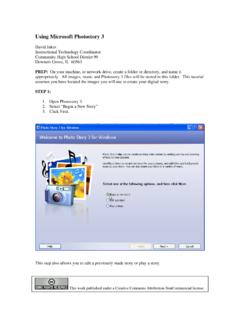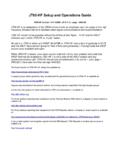Transcription of BigSound P5 Handbook - Phoenix Sound
1 BigSound P5 HandbookPhoenix Sound Systems, West Liberty RoadAnn Arbor MI : 800-651-2444fax: 734-662-0809e-mail: 2005-2008 Phoenix Sound Systems, of Sound Board & Pin Out Basic Bench Switch Sounds and Sounds and Variables (DCC CV)..10 Computer Trigger and Function Function Jack A: Wiring Wire Train ..19 RCS: : Elite B: P5T Auxiliary Input Input Board (P5T) 2009- 2 -IntroductionDear Model Railroading Friends,Thank you for choosing Phoenix Sound Systems to fill your railroad with Sound .
2 The P5 board is smaller than our previous systems and is designed for applications with a constant power source - DCC, constant track power, on board batteries or stationary P5 system, like the 2K2 system, can be loaded and customized using a PC. You will need to upgrade your PC software to version and ROM library to version (6900) or newer in order to load and save P5 compatible know you re eager to do some listening, so continue through the initial checkout. The Phoenix BigSound P5 board comes with even higher input voltage tolerances to keep pace with larger trains and bigger power supplies.
3 The board is highly protected against improper wiring and over-voltage gremlins. However, if you notice static electric sparks when you touch things you should ground yourself by touching something conductive before handling your board. Also be careful not to lay the board on metal surfaces or model parts when powered. Basic electrical component handling care is always a good idea. Happy Listening!February 2009- 3 -Getting AcquaintedOne of the ideas behind the P5 system is to tailor the system to your needs to avoid unnecessary expense. The P5 Basic (Board only) system includes the Sound board (pictured below), connectors C1 which connects the speaker and power leads and C2 which is the computer access jack.
4 We also offer the P5 as a kit which includes the Sound board with a speaker and all connectors (C1, C2 and C3) appropriate to the components available include: volume switch [6001-05], volume switch with reed switch[6020-05], volume switch with reed switch and bare leads for Board Trigger 2, volume switch with bare leads for Board Trigger 1, and volume switch with bare leads for Board Triggers 1 & are 3 connectors on the P5 board. The chart on the following page shows the pin out for each. This chart also details the length and coloring of the wire leads if you order the generic Sound Board & ConnectorsFebruary 2009- 4 -4 3 2 1123456712345678910C1C2C3 Connector Pin Out ChartConnector: PinPurposeColorTerminationC1:1 Power/DCCG reenBareC1:2 Power/DCCG reenBareC1:3 SpeakerBrownSPOX-3C1:4 Shield (unused) C1:5 SpeakerBrownSPOX-3C1:6 Alternate Power +VioletBareC1:7 Alternate Power -BlackBareC2:1 Trigger GroundBlueBare*C2:2P5 Trigger 2 OrangeBare*C2:3 Trigger GroundBlueBare*C2:4P5 Trigger 1 BrownBare*C2.
5 5 GroundBlackJST ZHR-3C2:6 Expansion SignalWhiteJST ZHR-3C2:7+3V ExpansionRedJST ZHR-3C2:8 GroundBlackVolume SwitchC2:9 Volume LevelYellowVolume SwitchC2:10 Volume +3 VRedVolume SwitchC3:1 GroundBlackJackC3:2Hi SpeedWhite C3:3 Computer SignalYellowJackC3:4+5 VRedJack* THESE CONNECTIONS CAN TERMINATE IN EITHER NOTHING, BARE WIRE OR REED SWITCHES, DEPENDING UPON THE TYPE OF ENGINE THE UNIT IS ORDERED 2009- 5 -Initial CheckoutThe Basic Bench TestEach system is tested before shipping but we recommend that you hook things up on your workbench, play with the system and get comfortable with the components before speaker and power supply connect to C1.
6 The speaker connects to the speaker jack (brown wires). Hook your bench power supply to the green wires. A power source of any polarity is acceptable. The maximum peak input voltage is 30 volts. If you are using a volume switch plug it into C2. This connector can only be inserted in one direction, so if you wired your own following the pin out chart on page 5 or are using one we supplied, it should work correctly. When the power rises above 9 volts you should hear Sound . If you are using our volume switch, raise and lower the volume. The system will play the idle 2009- 6 -Advanced CheckoutIn order to play moving sounds you will need at least one of the following:1.
7 A DCC power source connected to A switch ( a reed switch) connected to C2:3, The Auxiliary Input Board [P5T] to sense motor APPENDIX B FOR THE P5T CHECKOUTDCC CheckoutThe Sound board default address is 3. Select 3 on your DCC controller. Turn the speed up and down. Sounds should play in coordination with the changing speed commands. Test the function buttons. The default function button assignment chart can be found on page Switch CheckoutIf you will be using a reed switch and magnets to sense speed, you may wish to hook them up and experiment with the magnets to get an idea of the sensitivity of the reed switches.
8 This will help you decide how to mount them in the locomotive or car. Whenever the trigger (C2:4) is connected to the trigger ground (C2:3) the system sees motion. The first closure should play the start toots and the starting 2009- 7 -Standard Sounds and EffectsMost sounds play automatically based on train speed. Many sounds can also be set to play using designated trigger inputs. The following section describes the standard Sound system configuration. All SystemsWhistle/Horn: Toots when starting (2 forward, 3 reverse) and stopping (one toot).
9 Crossing whistle sequence plays when you reach the Whistle/Horn play speed. You must slow down to at least 75% of the play speed in order to have it play again when you speed back up. Bell: Plays when you first start moving and just before stopping. You must reach twice the bell stopping speed in order to replay the bell when stopping. The bell will not replay unless 35 seconds have elapsed since the last time it Clank: Plays when you come to a stop in reverse; will not replay until you go forward and back up again. Brake Screech: Plays just before SystemsAir Pop: Plays periodically during Release: Plays as the engine starts SystemsBlow Down: A longer and more vigorous steam release that clears the flues.
10 Plays as you slow Release: Plays after you come to a : Basically runs all the time but the engineer will shut it down if the engine sits in idle for awhile. Comes back on when voltage approaches the start voltage. Air-Pump: Plays in idle to maintain air 2: A sustained compressor run that restores air pressure after it s been clank: Plays at slow speedHiss: Plays at low speed, clears the cylinders of excess Shoveling: Plays periodically while engine sits at 2009- 8 -Triggered Sounds and EffectsThe P5 board has two trigger inputs, normally assigned to speed.



